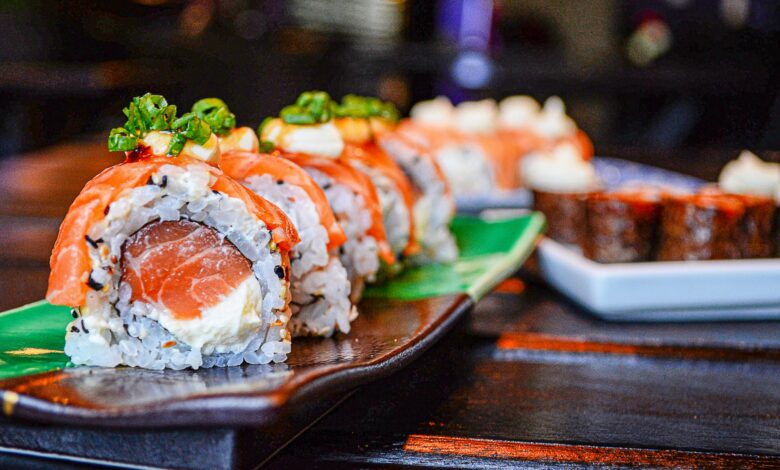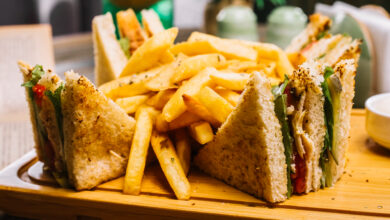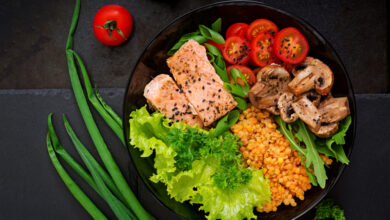Alaska Roll is a Delighted Sushi Originated from Japan

Introduction
The Alaska Roll is a type of sushi that originated in Japan. It’s a variation on the maki, or nigiri, which means it’s made with raw fish instead of cooked ones—and it tastes good! This unusual dish has been around for centuries and has traveled far from where it started: Hokkaido island in Northern Japan. There are many different versions of this particular sushi roll all over the world today. In fact, some people even make their own at home using fresh ingredients from their local grocery stores (because sometimes you don’t have access to fresh fish).
What is the alaska roll?
The alaska roll is a type of sushi that’s become very popular in recent years. It’s also sometimes called the California roll, but for many people it’s more commonly known as the Alaska roll—a reference to its origins on the west coast of America.
The ingredients for this dish vary from place to place; some may have salmon or tuna added and others will have avocado instead of crab meat. But all versions include rice, seaweed (or nori), and fish roe (aka caviar).
What kind of sushi is this?
The Alaska roll is a type of sushi roll that has a very unusual shape: it’s like an upside-down cone. It’s made with rice, crab meat and avocado in the middle, then wrapped around with cucumber strips and torched before being served. This dish isn’t really traditional Japanese cuisine—Alaska rolls were invented by Americans in the 1990s as part of their obsession with Japanese food at that time.
Is it a type of maki?
The Alaska roll is a type of maki. Like most other maki, it’s rolled up and inserted into the bowl of rice at one end, then flipped over so that the rice side is on top when you eat it. This particular style of roll has its own name: alaska roll.
The reason for this distinction from other rolls is due to how they’re made—the inside-out method means that instead of being stuffed with nori (seaweed) as most types are, this one has its fillings on top instead!
How are the alaska roll ingredients arranged?
The alaska roll is a large sushi roll made with rice, fish, avocado and green onion. It’s often eaten for lunch or dinner.
The ingredients are arranged in a circle (or “U” shape), but it can also be done in other ways: straight line, triangle or square. Some people like to eat their alaska rolls with chopsticks while others prefer using their hands.
What ingredients go into an alaska roll?
You’ll find the following ingredients in most alaska rolls:
- Avocado. The avocado is the main ingredient, and it’s usually sliced thin. It adds a creamy texture to the roll that complements crabmeat and cucumber.
- Crab meat. Crab meat is often imitation crab (a species of crustacean) but can also be fresh or frozen blue claw crabs or Dungeness crabs if you prefer your rolls cheaper than usual. If you’re using fresh or frozen blue claws, make sure they’re fully thawed before adding them to your sushi roll—they’ll keep their shape better when heated up again later on! If you’re using fresh Dungeness crabs instead then try freezing them first so they’ll stay together better while being cut into strips; otherwise there might be too much overlap between them when rolled up into sushi pieces later down below.”
What meat is used in traditional alaska rolls?
The meat of choice for an alaska roll is usually tuna or salmon, but you can also get yellowtail. Tuna may be the most common choice because it’s less expensive than other seafood options and has a mild flavor that’s easy to pair with other ingredients like wasabi or tobiko (a type of caviar). Salmon is often paired with wasabi as well, which makes sense given its high fat content—it’s an ideal filling for the roll itself!
Why isn’t there more avocado in the alaska roll?
The reason for this is simple: avocado is expensive and difficult to find in Japan. It’s also a healthy ingredient, which means that it has to be imported from another country. In comparison with other sushi ingredients like salmon or tuna (which are both more popular), the high cost of avocados means that they’re not worth paying extra for—and if you do want some on your roll anyway, there aren’t many options available either.
The only thing worse than not having enough avocado in your roll would be having too much! Too much avocado will turn what should be a light salad into a heavy baguette filled with goopy messes that make you feel like you just ate an entire bowlful of guacamole at once—and nobody wants their lunchtime meal to taste like their breakfast food!
Where did the alaska roll get its name?
The Alaska roll was named after the state of Alaska. It was chosen by a contest winner, who received a free dinner at a local restaurant. The contest was held in 1965 and since then has become an iconic staple in Japanese cuisine.
Where did the Alaska roll originate?
The Alaska roll was invented in Los Angeles by Hiroaki Shimizu, who was inspired by the California roll. It later became a popular sushi dish in Japan and other parts of Asia.
When was this unusual sushi dish invented?
The Alaska roll was invented in the 1960s by a Japanese chef named Michi Kawano, who worked at Sushiya. It was named after his restaurant and is also known as the “Michi Roll” or “Kawano Roll.”
How creative are the local twists on the alaska roll?
The alaska roll is a great way to get creative with your sushi. You can use leftover ingredients, or try something new. The possibilities are endless!
The alaska roll is also a great way to use up leftovers. If you have some extra salmon or avocado, why not make an alaska roll out of them?
The story of how this bizarre sushi treat came to be.
The story of how this bizarre sushi treat came to be.
In the early 1900s, Japanese chef Fujita Hanaya invented the alaska roll. The name refers to its position in a line of rolls known as “kappamaki,” which means “roll with seaweed.” The dish was first conceived for serving at a local bar; however, once it became popular among locals and tourists alike, it quickly became an international delicacy. Today’s version differs slightly from its original form: instead of using nori (Japanese seaweed), avocado is used instead—a substitution that adds another layer of flavor without losing any traditional characteristics inherent within this dish!
Conclusion
We hope that you’re excited to try a real Alaska roll, but if you’re not, don’t worry—we understand. It can be tricky to wrap your head around what makes this dish so special. But if you keep trying new things, eventually they will start tasting great!
Read here more about this website.




